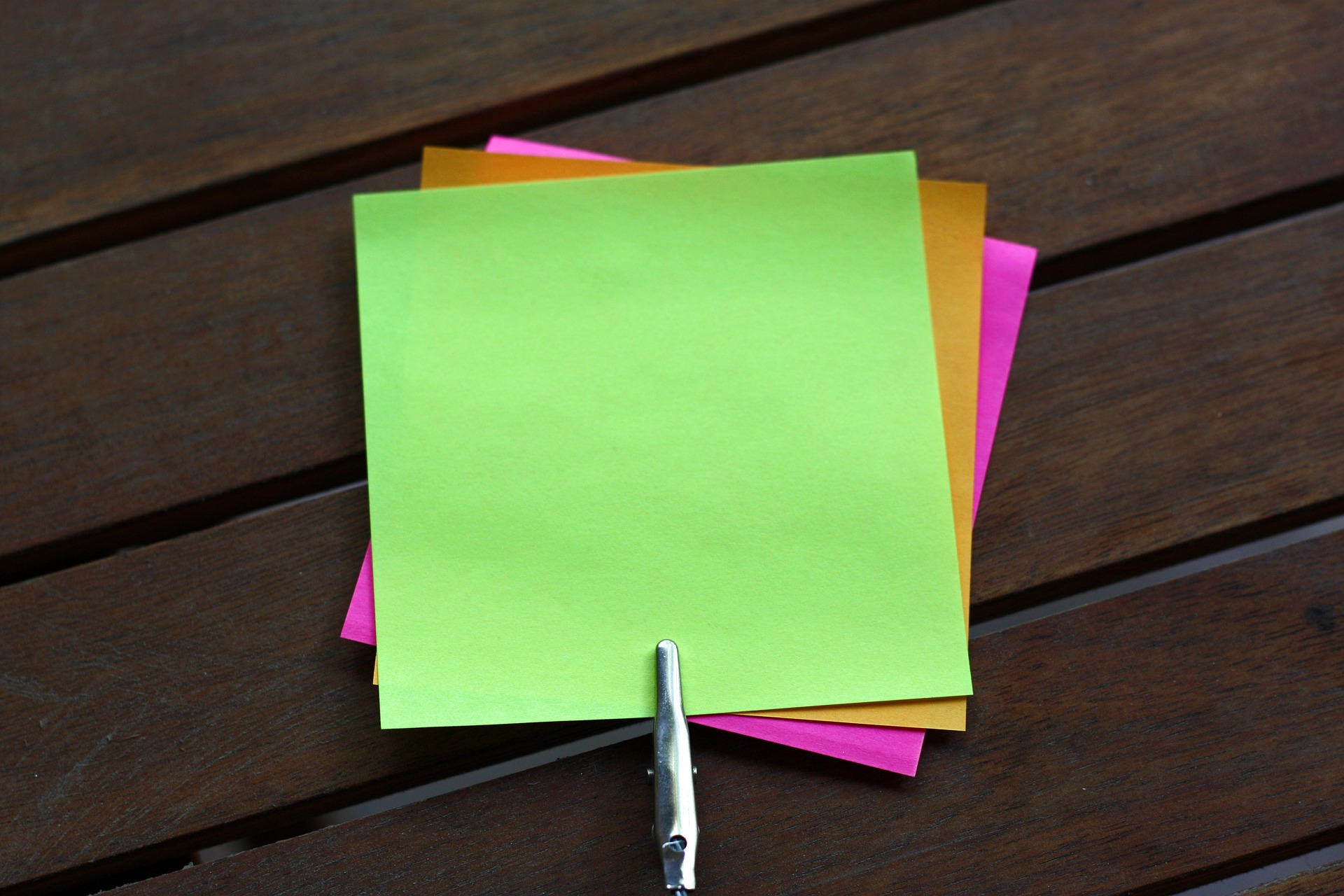Post-it-notes are a perfect idea for making your students more energetic and willing to learn. They are available in many shapes, colours, sizes. In case of emergency you can replace them with small pieces of paper. They are versatile because you can use them to practise different aspects of language. They don’t require a lot of preparation time. Finally, they make our students move which helps them learn in a more effective way.
There are so many advantages, so let’s try and use them to make our lessons memorable and full of fun.

Sticky chunks
Post-it-notes – write a sentence / expression from a song on post-it-notes, when students come in, they get 2-4 sticky notes (depending on the number of students); students listen to a song, they have to stand up when they hear the expression from their sticky note. When the song has finished they create pairs and have to work on a short dialogue which would include the texts from their notes.
Alternative: instead of a song you can use a recording from your coursebook
Sticky revision
Ask students to create a list of words you have discussed recently (it might be as part of revision). Be sure to decide on a common list. Ask students to work in groups of 3 or 4, they have to write each word on a separate sticky note. The teacher reads out definitions of the words from the list, students listen, when they think they know what word is being described they grab it as quickly as possible. If they are wrong, they have to give the sticky note back. The students with the biggest number of words wins.
Sticky bingo
Students get 5-8 random post-it-notes, they watch a film / listen to a story / listen to a song; they have to cross out words they have on their notes when they hear them, when all their words were mentioned they shout Bingo.
Sticky reading
Write on separate post-it-notes questions to the reading and vocabulary from the text for analysis, before the lesson attach post-it-notes under students’ chairs. Students’ task is to answer the question and prepare definitions of the words while reading, after reading they present their findings.
Sticky grammar
To practise a given structure prepare a set of sentences, write each word of the sentence on a separate piece of paper, students work in pairs or individually, they get a pile of sticky notes and have to order them to create a correct sentence, when they are ready they mix the post-it-notes and exchange them with another student/pair.
Sticky speaking
Ask students to write different kinds of questions (they can refer to a given topic or practise a given grammar structure), teacher collects the notes, students draw the notes and have to answer the question, they can do it sitting in a circle or mingle around the classroom.

